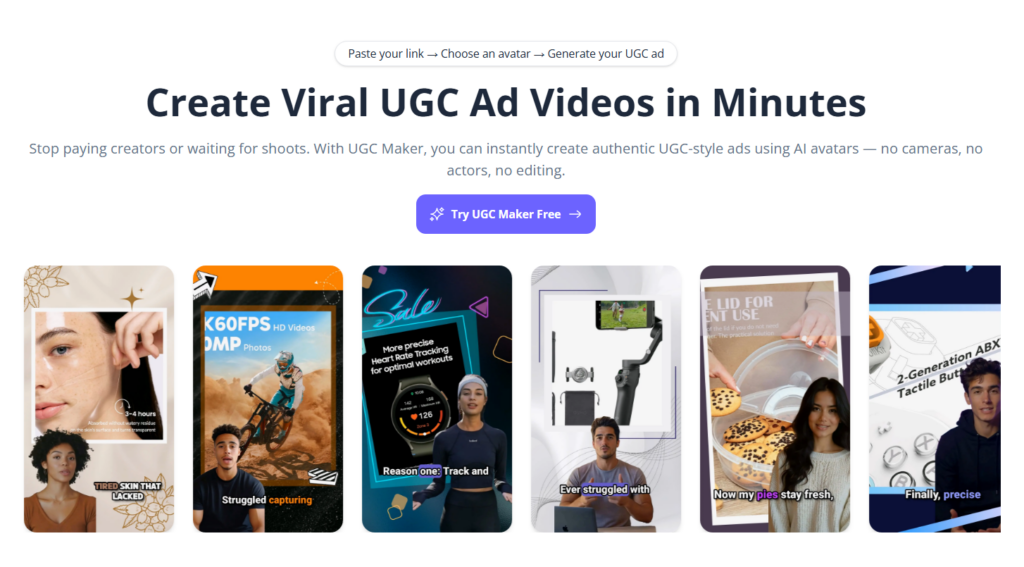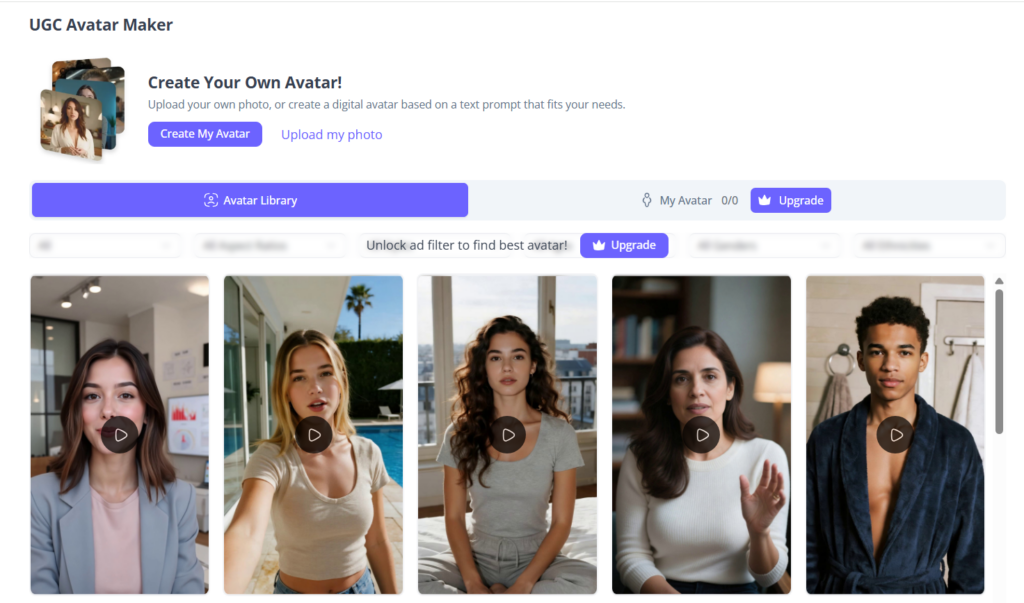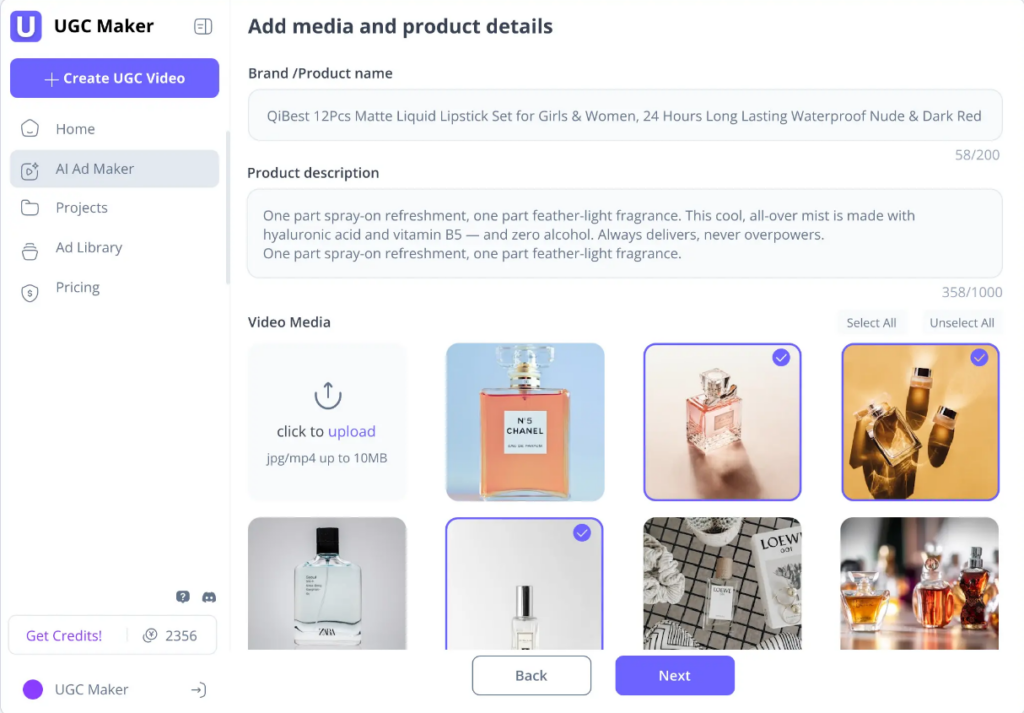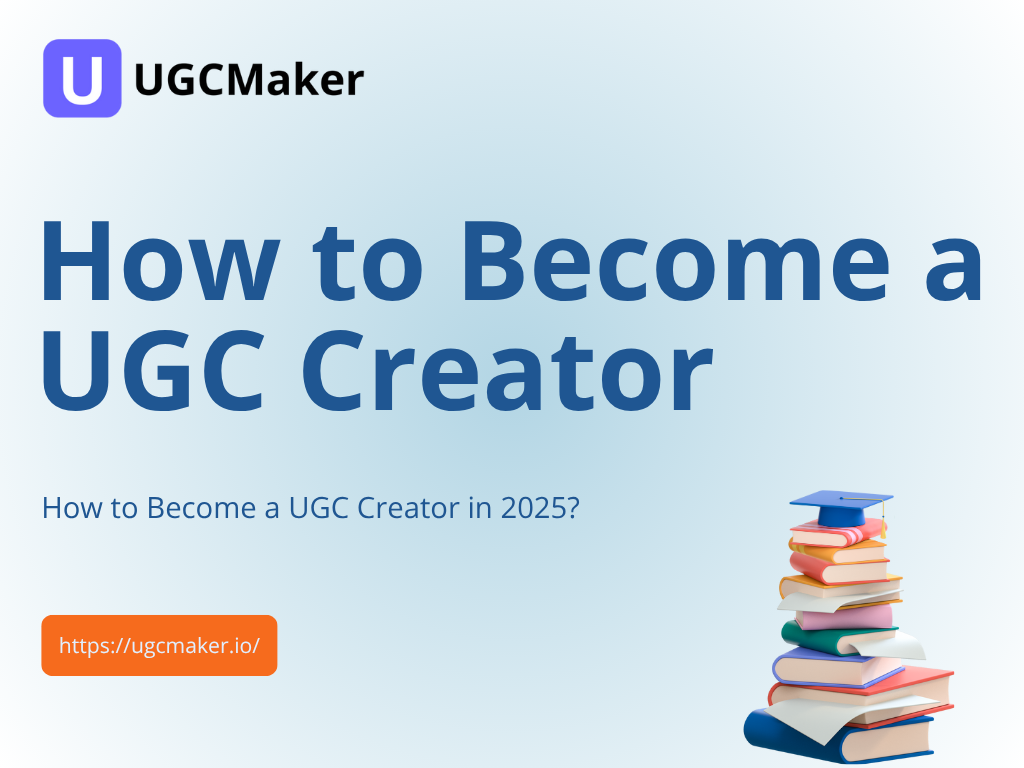What is a UGC Creator
A UGC creator is someone who crafts real, authentic user‑generated content for brands—rather than polished ads or flashy campaigns. Imagine you're a storyteller armed with your phone camera, capturing everyday moments around products you love: that’s what it means to learn how to become a ugc creator. In today’s marketing landscape, brands pay for that genuine sparkle.
When you search “how to become a ugc creator,” you'll learn it's not about follower counts; it's about trust, realism, and relatability. You create snippets—maybe a short video, review, or reel—that feel like something your friend might post. Brands then use that content on their own channels, citing the creator—this is the heart of paid UGC content
Difference Between UGC and Influencer Content
At first glance, UGC creator content and influencer posts may seem similar—but they serve very different missions. Influencers create content on their own platforms, to sway their audience through personality, aspiration, or fame. UGC creators, by contrast, create content that brands post on their channels: less about YOU, more about the product, with zero frills but full sincerity.
Influencers aim to persuade followers; UGC creators aim to be invisible stars—helping brands tell relatable stories. Brands love it because it looks unscripted, budget-friendly, and incredibly effective for engagement.
So if you're Googling “how to become a ugc creator,” it’s not about becoming an influencer—it’s about mastering authentic content creation for brand use.
Why UGC is Popular in 2025
In 2025, we’re in the middle of what some call the “authenticity renaissance” of social media. Audiences are fatigued by overly polished ads and crave real stories. Three big reasons for this boom:
- Short-form video dominance – TikTok, Instagram Reels, and YouTube Shorts continue to rule attention spans.
- Cost-effectiveness for brands – It’s cheaper to hire 10 micro-creators than to film a single studio commercial.
- AI-powered creation tools – With tools like UGC Maker, anyone starting to explore how to become a ugc creator can generate polished, authentic videos in a fraction of the time.

Why Become a UGC Creator
Imagine you’re scrolling through TikTok and you spot a video—someone’s opening up a skincare product, but it’s not a celebrity, just an everyday person. That could be you.
Getting into UGC creation isn’t just about making a quick buck. It’s about taking control of your schedule, working remotely, and staying ahead of digital trends. You get to partner with brands that actually fit your values. Plus, this line of work’s a smart entry point into bigger opportunities—content marketing, social media strategy, even product design. Honestly, it’s a flexible way to build real experience in today’s creative industries.
Benefits of UGC Content Creation
Low barrier to entry: No need for a huge following or fancy equipment—your smartphone is enough. High demand from brands: Companies from startups to giants are constantly seeking fresh, authentic content. Flexible income: Work as much or as little as you want; UGC fits side hustles or full-time careers. Creative expression: Each project is unique—beauty, tech, food, fitness—there’s room for your personal style.
Earning Potential for New Creators
So how much can you earn? Entry-level creators might charge $50–$150 per video, while experienced ones command $500+ per piece. Top-tier UGC creators often sign retainer contracts worth thousands per month.
Key factors include niche, content quality, and usage rights. For example, allowing a brand to run paid ads with your content for 6 months is worth more than just posting it organically.
Career Growth and Future Trends
The UGC market is projected to keep expanding, with AI integration leading the charge. Soon, you’ll see hybrid content—human-shot videos enhanced by AI editing, captions, or even synthetic voiceovers. UGC Maker is already pushing this frontier, letting creators generate multiple ad variations instantly for different platforms.
Looking ahead, creators who blend storytelling skills with data (analytics, performance tracking) will stand out. It’s not just about making pretty videos; it’s about results.

Skills You Need to Become a UGC Creator
Think of UGC as a cocktail of three main ingredients: visual skills, storytelling, and marketing sense. You don’t need to master all at once, but each skill adds a layer of professionalism to your work.
Basic Photography and Video Skills
- Learn to frame shots: Rule of thirds, natural light, clean backgrounds.
- Use your phone’s manual settings: Adjust exposure, focus, and white balance for better results.
- Stability matters: Invest in a cheap tripod or use household hacks (stacked books work too).
Even subtle improvements—like better lighting or smoother transitions—can double the perceived quality of your content.
Storytelling and Content Strategy
Let’s be real—effective UGC isn’t just someone blandly holding up a product and smiling. It’s about weaving a quick, relatable story. Picture this: “I was struggling to find a moisturizer that actually worked for my skin… then I tried this, and things turned around.” That simple narrative? It builds trust and connection right away.
You want catchy hooks, too, like “This belongs in your morning routine, no question.” Always align your message with the brand’s objectives—whether that’s getting people to recognize the name or pushing them to hit ‘buy now.’ Match your story to the goal, and you’re set.
Editing Tools and Software to Learn
You don’t need Hollywood-grade tools. Start with apps like CapCut, InShot, or Canva for quick editing. As you grow, explore Adobe Premiere Rush or Final Cut Pro for more control.
Key editing must-knows: trimming dead space, adding captions (many people watch muted), and matching music to the vibe. Even AI tools can now auto-caption and suggest trending sounds.
Free Tools vs. Paid Tools
- Free tools: CapCut, VN Video Editor, Canva – great for beginners, cost nothing.
- Paid tools: Adobe Premiere Pro, Final Cut – better for advanced creators needing custom transitions, color grading.
Pro tip: Start free, upgrade only when your income justifies it.
AI Tools for Faster Content Creation
AI is changing the game. From auto-editing to generating multiple ad variations, AI tools let you focus on creativity rather than technical grunt work.
- UGC Maker: Turn simple scripts or product links into multiple UGC-style ads in minutes.
- AI voiceover generators: Add natural-sounding narration without recording yourself.
- AI captioning tools: Instantly add subtitles in multiple languages for wider reach.
These tools cut production time in half, meaning more projects (and income) in less time.
| Skill | What to Focus On | Tools / Tips |
|---|---|---|
| Photography & Video | Frame shots well, use good lighting, keep videos stable. | Phone camera, tripod. Small tweaks = big quality boost. |
| Storytelling | Create short, relatable stories with clear brand goals. | Use hooks like “I tried this and it worked.” |
| Editing | Trim clips, add captions, match music. | CapCut, InShot, Canva → Premiere Rush, Final Cut. |
| Free vs. Paid Tools | Start with free tools, upgrade as you grow. | Free: CapCut, VN, Canva.Paid: Premiere Pro, Final Cut. |
| AI Tools | Automate editing, captions, and voiceovers. | UGC Maker, AI caption & voice tools. Save time, boost output. |
How to Start as a UGC Creator
Starting your journey as a UGC creator can feel overwhelming at first, but it’s actually a lot simpler than it looks. The key is to start small, experiment, and learn as you go. Here’s how you can take those first actionable steps.
Build Your UGC Portfolio
First step: build a portfolio. Create a UGC-specific account on Instagram, TikTok or YouTube Shorts. Upload sample videos of products you genuinely use—unboxing, routine, reaction. Write “UGC Creator” in your bio so brands searching how to become a ugc creator can find you fast.
- Shoot sample videos using products you already own. For instance, if you love coffee, create a morning routine video featuring your favorite mug and beans.
- Include different content types: unboxings, testimonials, tutorials, lifestyle shots.
- Show variety in style: close-ups, POV shots, text overlays, voiceovers.
Even 5–6 strong examples can land your first paid gig. Platforms like Canva or Google Drive are great for hosting a simple portfolio link you can share.
Find Your Niche and Style
Being a generalist is okay at first, but niching down helps you stand out. Are you into fitness, beauty, tech, or home décor? Brands love creators who live their category—it adds authenticity.
Your style matters too. Are you high-energy and funny? Calm and aesthetic? Find what feels natural; forced styles rarely resonate with audiences or brands.
Platforms to Showcase and Sell Your Work
The best part about UGC is you don’t need millions of followers, but you do need visibility. Showcase your work on platforms where brands actively look for creators.
TikTok, Instagram, YouTube
Showcase your strongest content—even if it’s from unpaid projects—across these platforms. Brands regularly scan TikTok’s “For You” page and Instagram Reels to discover emerging creators. Clearly list “UGC Creator” in your bio and make sure your contact information is easily accessible in your highlights.
UGC Marketplaces and Brand Platforms
Marketplaces like Billo, Insense, and Trend are built specifically for connecting brands with UGC creators. They provide briefs, guidelines, and secure payments—perfect for beginners.
You can also pitch directly via cold emails or LinkedIn. A simple DM to a brand’s social media manager can sometimes lead to collaborations.
How to Price Your UGC Work
Pricing is one of the trickiest parts of learning how to become a UGC creator. Charge too little, and you undervalue your work; charge too much, and you scare off brands. Here’s how to find your sweet spot.
Factors That Affect UGC Pricing
- Complexity: A simple product shot costs less than a 60-second scripted video.
- Usage rights: If a brand wants to run your video as paid ads, charge extra (ad usage can add 50–200% of the base rate).
- Exclusivity: If a brand asks you not to work with competitors, factor that into your rate.
How Beginners Should Charge
Start with a base rate (e.g., $75–$150 per video) and adjust based on complexity. Many creators use tiered packages: 1 video for $100, 3 for $250, etc. Always clarify whether the price includes raw footage, revisions, or usage rights.
Negotiation Tips for Higher Rates
- Lead with value: Explain how your content drives engagement or conversions.
- Offer bundles: Brands love packages (e.g., “3 videos + 5 photos for $400”).
- Be confident: If a brand pushes back, ask for their budget and work from there rather than discounting immediately.
Tips to Grow as a UGC Creator
Once you’ve landed your first few projects, it’s time to level up. Growth comes from consistency, professionalism, and data-driven improvements.
Building Long-Term Brand Partnerships
One-off gigs are great, but recurring clients mean stable income. Deliver projects on time, over-communicate, and suggest future ideas. If your content performs well, pitch a monthly retainer (e.g., “4 videos per month for $600”).
Using Analytics to Improve Performance
Platforms like TikTok and Instagram provide basic insights: views, watch time, and engagement rate. Use this data to learn what hooks work best or which styles drive conversions. Share these results with brands—it proves your value beyond aesthetics.
Avoiding Common Beginner Mistakes
- Underpricing your work: Exposure doesn’t pay bills; charge fair rates.
- Ignoring briefs: Always align your content with brand guidelines.
- Over-editing: Authenticity beats perfection—avoid overly polished, ad-like vibes.
Tools and Resources for UGC Creators
The right tools don’t just make your life easier—they make your content look professional. Here’s what every aspiring creator should know.
Best Editing Apps
- Editing apps: CapCut (free), InShot (beginner-friendly), Adobe Premiere Rush (intermediate).
- Gear: Smartphone tripod, ring light, wireless mic (optional but improves quality).
- Portfolio platforms: Notion, Canva, or a simple website to showcase work—crucial when brands search for “how to become a UGC creator” portfolios.
You don’t need a DSLR to start—most viral UGC is shot on iPhones or mid-range Androids.
Online Communities and Learning Platforms
Join Facebook groups, Discord channels, or Reddit communities for UGC creators. They’re goldmines for feedback, pricing advice, and job leads. Courses on platforms like Skillshare or YouTube tutorials can help you level up skills at your own pace—many are free.
AI Tools for Faster Workflow
AI is your secret weapon for scaling content. From auto-captions to trend suggestions, these tools cut editing time in half.
- UGC Maker: Generates multiple ad variations from one script—perfect for brands needing quick content across TikTok, Reels, and Shorts.
- AI voice generators: Great for creators uncomfortable recording themselves.
- AI thumbnail creators: Boost click-through rates with better visuals.

Conclusion
Learning how to become a UGC creator isn’t just about shooting videos—it’s about building a brand, understanding marketing psychology, and delivering value to clients. The beauty of this field is its low barrier: you don’t need fame, fancy equipment, or years of experience. You need creativity, consistency, and a willingness to adapt to trends.

